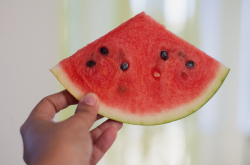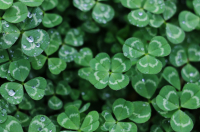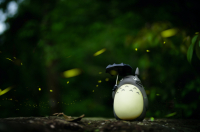
Oymyakon forests, photo by Maarten Takens
When I arrived, after two days on abysmal, pot-holed roads being hurled around the back of a Kamaz truck as part of a documentary I was making about an expedition to the remote Yakutian Lake Labynkyr, the thermometer registered a balmy -51 degrees. We were all very grimy and exhausted after the trip, and like many of the traditional wooden houses in remote villages, ours had no bath or shower, just a Banya a short dash away across the frozen snow.
Now, I’d been to Russian baths before, and had even tried this type of rural variety, which was basically just a wooden shack partitioned into two cubicles: one for changing, the other reserved for sweating, thanks to a dark, hunched, evil-looking stove in the corner that heated the air in the cramped space to a ferocious degree.
However, I had never surrendered myself to the mysterious Russian Banya practice of "Flogging", in which the victim is beaten in the heat with bunches of steaming birch leaves, known as "Veniki". But, after one of the most punishing trips ever, I reasoned that a bout of restorative flagellation might do just the trick. So I lay down on the bare wooden platform while, Alexei, one of the divers on the expedition, raised the Veniki to begin this strangest of bathing rituals.
During the first phase, the leaves are dragged along the back and legs, stroking and scraping and dredging, producing a not unpleasant ticklish sensation, though with the occasional feeling of piercing hot needles pressed against the skin. Then the lashing commences, gently at first but soon building to a barrage of whipping, thrashing, lacerating. Best — or worst — of all is that the leaves of the Veniki seem to trap the heat and then apply it directly to the skin, amplifying and channeling into a direct, searing temperature onslaught. Then Alexei raised my feet and proceeded to flail my soles; truly the most extraordinary feeling of pleasure, seasoned with pain.
After that, it was a full-on Banya assault, pummeling my body, whacking the Veniki against my back, buttocks and legs, beating the breath and desire out of me until I felt like a chunk of meat on a slab. When it was done, he fetched a bucket of snow and smeared it all over my quivering skin. "Refreshed?" he asked, with a wide satisfied grin, "Obnovalis?" Yes, I was definitely refreshed, more refreshed than I had ever been in my life before.
It’s difficult to underestimate the importance of the Banya in Russian life and culture.
Over the course of the country’s history, while the rest of Europe wallowed in medi squalor and disease, Banyas were credited with keeping Russia healthy and "in a higher state of cleanliness".
During communism, when many lived in communal flats with barely a shared sink, the Banya was often the only hygiene option. Even today, residents of shower-less Kommunalkas must resort to regular trips to the banya.
One of the earliest historical Banya mentions comes courtesy of the Apostle Andrew, as related in the Chronicle of 1113: "I saw the land of the Slavs, and while I was among them, I noticed their wooden bathhouses," Andrew noted, "They warm them to extreme heat, then undress, and after anointing themselves with tallow, they take young reeds and lash their bodies. They actually lash themselves so violently that they barely escape alive."
In Russian literature, the Banya is ubiquitous, making numerous appearances in Pushkin, Tolstoy, Dostoyevsky and most notably Сhekhov, whose short story, In the Banya, serves up some delicious observations of Banya denizens: "A scrawny man with jutting out protuberances of bone was seated and was beating himself about the stomach with birch twigs. He seemed to be made only out of ribs and skin."
During the Soviet Era, the authority on Banyas was satirist Mikhail Zoshchenko, whose "Scenes from the Bathhouse" recounted the most intimate details of Communist life through the prism of the banya. The most famous of all Russian Bards, Vladimir Vysotsky, wrote and sang about the heat, plunge-pools and steamy bad language: "Heat the Banya, Heat it white," he crooned, "Fill me with heat, loosen my tongue…"
The Banya finds its way into films, most notably the festive Soviet favourite "Irony of Fate" about a group of friends whose New Year Trip to the banya has calamitous consequences. Also, the TV serial "Naval Cadets, Charge", in which a foreigner is flayed with veniki to the point of actual death. And the banya has entered the Russian lexicon: "Prilip kak banny list' or "Sticky as a banya leaf" refers to annoyingly persistent people; "Poddat zharu" or "Increase the heat' is the equivalent of "Ramp up the tension".

Irony of Fate, screenshot
Inevitably, the Banya itself has nurtured its own specific customs and etiquette, which may at first seem daunting to novices or foreigners.
In addition to the sado-masochistic practice of flogging, Russians will also wear a variety of silly felt hats, which look like floppy medi helmets. This is supposedly to protect the head and ears from the heat, but really, we suspect, as an alternative steam-room fashion statement. Otherwise, Bathers will generally go naked, protecting their modesty while in transit to and from the steam with a sheet or towel.
Even Veniki come in a dizzying range of varieties: the most popular being Birch, to ease muscle ache and joint strain; but also Oak to dry oily skin; Lime to relieve headaches; Alder to cure colds; Fir to increase blood circulation; and Eucalyptus for sore throats, and many others. Some — particularly women — will cover themselves entirely in honey before flogging. (Just don’t ask anyone to lick it off when you’re done. That’s definitely not allowed.)
While rural banyas like the one in Omyakon are often just a wooden hut, public baths in cities are labyrinthine affairs. Most will also offer more than one level or Klass — "Narodny" or "People's" is usually the most basic, with "Kupalny" or "Bathers' Klass" being the next step up, all the way to Pol Lux or Lux (Half- and Full-Luxury). It’s also important to note that there will either be separate Men and Women’s Klasses too, or designated days — ring ahead to find out, or you may find yourself excluded! Except for a small select amount of mixed establishments — discovered only through word of mouth — segregation of the sexes is strictly enforced in the world of the Russian Banya.
While some of the more expensive Klasses may offer massage rooms, flat-screens, full-service restaurants, the main elements are always the same. First is the changing room, usually divided into booths, often with social "chill-out" areas. Then there is ante-chamber known as the Prebannik with showers and lounging areas — but most importantly, this is the hallowed place where the Venniki are steeped, first in cold water then hot, to achieve precisely the requisite level of suppleness. In the Prebannik, you may also notice a random guy, sweeping, cleaning, tending to the leaves. This is actually the Bannshik or "High Priest" of the Banya, who keeps all of the processes running smoothly.
At the very epicentre of it all, the veritable altar in the Cathedral of Steam, is the "Parilka" or "Steam Room." It will generally consist of a central boiler, with rows of benches or seating and flogging. Turbocharging the heat is the same as in a regular sauna — opening a hatch hurling in a ladle of water — but the Banya is distinguishable by the fact that the heat is more intense, dryer and without the Scandinavian pine-cone aroma.
After sessions in the blistering steam — lasting 5−10 minutes, depending on stamina — bathers emerge to hurl themselves gleefully into icy plunge pools. These are also located in the Prebannik, some barely bigger than a barrell, others approaching the size of swimming pools. Bathers may also opt for "Ushati" or basins for cold water dousing. In less expensive banyas, these are usually plastic, but in classier joints, they come in rough-hewn wood, or are sometimes fixed to the wall, tipping their icy contents at the yank of a chain.
The overall aim: to give the cardiovascular system a thorough workout and, of course, to indulge the instinctive Russian love of extremes. Some rural banyas are built beside lakes so that, in winter, bathers can leap from the steam and immediately dunk their naked bodies through a hole in the ice into the zero degree water beneath. This is considered the Banya equivalent of the Holy Grail.
Just as important as the steam in any banya, is the social experience. In between sizzling and dousing sessions, bathers will sit around in the changing area — drinking, eating, gossiping. Even in the oppressive heat, there is often a genial atmosphere. And every session begins and ends with the hearty cry of "S legkim parom" or "With Light Steam" meaning: Enjoy your Bath!
The mother of all banyas — the Sandunovskie — is in Moscow. This was the favourite of Pushkin and Tolstoy and retains today its palatial grandeur. It boasts a large pool lined with pillars, stuccoed ante-chambers, ornate chandeliers, a huge multi-level Parilka, a variety of different plunge-pools and is located in a bright yellow neoclassical building that wouldn’t look out of place bordering the Neva. When I first visited back in the 90s, it was populated by mafiosi and would-be Oligarchs all sealing deals in the steam or over krevetki (shrimp) and champagne in the common area. (The women’s department, I’ve been reliably informed, was full of their pneumatic molls, with fake tans and liposuction scars.) These days, while Moscow’s new middle class have reclaimed the Sanduny, as it’s affectionately known, this is undoubtedly still a place where deals are brokered.

St. Petersburg used to have its own equivalent, the Nevsky Bani. This was a massive, grey brutalist monstrosity on Ulitsa Marata — the kind of building that, ironically, would not have looked so out of place in Moscow! It made up for its aesthetic deficiencies inside with a spacious Parilka and a dizzying array of pools. Sadly, the Bani were summarily demolished in 2008 to make way for a shopping arcade that is even more soul-less and ugly.
Much derided in its day, the Nevsky Bani is now looked back on nostalgically as the Golden Age of St. Petersburg bathing.
But there are still plenty of other Banya options in the city. In part two of this epic examination of Russia’s banya phenomenon, brace yourselves for a tour of the best — and the worst — that St. Petersburg has to offer. Till then, take a few moments to mull over one of the most telling and philosophical proverbs ever spawned by Russia’s cult of bathing:
In the banya everyone is equal…




